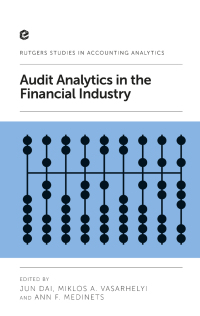Question
Hightrek was a small Canadian manufacturer of camping gear. Its manufacturing facilities were located not far from Niagara Falls, New York, and the company specialized
Hightrek was a small Canadian manufacturer of camping gear. Its manufacturing facilities were located not far from Niagara Falls, New York, and the company specialized in low-cost tents that were sold through small retailers catering to price-sensitive and casual campers. Business was steady, although margins were low and growth prospects nearly nonexistent. The company was considering a modest expansion into a new product line. The basic technology used to make camping tents could be adapted to make lightweight hoophouses for gardening. A hoophouse was similar to a greenhouse in that it allowed gardeners in cold climates to start plants early and gardeners in warmer climates to control pests.
Unlike most competing products, these hoophouses would be highly portable and easily stored. While there were many considerations involved, Hightrek first had to explore whether the decision made financial sense. All the associated costs were easily estimated; a small test run on the frames suggested there would be no production uncertainty; and many of Hightrek's customers indicated they would consider stocking the item. If this expansion made financial sense, then Hightrek would have to explore whether it would be a good strategic move.
Hoophouse Cash Flows
To start production, Hightrek needed new machinery for piecing together the translucent material appropriate for greenhouse applications. This new machine would cost $80,000 and would be depreciated for tax purposes using straight-line depreciation over the four-year life of the machine (depreciation would be $20,000 a year).
At the end of four years, the machine would be worthless. Another balance sheet effect of hoophouse sales would be an increase in both accounts receivable and accounts payable. The net impact of these would be an increase in net working capital equal to 6% of sales. The production of hoophouses would require fixed annual costs of $38,000 a year (mostly an increase in labor costs as the company had enough available free space to accommodate the new machine). The rest of the costs were related to materials and would be equal to 65% of the anticipated selling price. The only other expense that mattered was taxes (30% of taxable revenue) as the remaining costs were considered negligible.
Although it was already early fall, Hightrek believed it could have the needed equipment in place at the start of the next year. The company estimated it would have sales of $170,000 that first year, sales of $220,000 the second year, sales of $250,000 the third year, and sales of $270,000 for the fourth and final year. After four years, the company would have to replace the piecing machine, and it could, at that time, decide whether to continue production.
Debate The hoophouse product line elicited substantial debate within Hightrek, but the debate was not related to the product or its production. The debate was over the best way to analyze the investment decision. Deke Manning, the operations manager, had been pushing to modernize some of the other equipment at the company and thought the investment should be redirected to support existing products. "This is coming out of my equipment budget. I should determine where the money will do the most good. I don't need a bunch of numbers to tell me I have old equipment that needs replacing," he said. Christine Knight, director of marketing and chief proponent of the hoophouse idea, believed that the product needed to be introduced regardless of what any analysis might say. "If we are going to grow this company, then we need new ideas. No one can really put a price tag on the importance of staying ahead of the market," she said. Katie Owen, the recently hired CFO and youngest member of the management team, was the lone proponent of a thoughtful financial analysis based on the net present value of the cash flows. Owen's argument was that "if this is a good project, then it will give us a return better than the 10% return everyone in our industry gets on their investments. If it doesn't, then we have no business in that business." Clifford (Clif) Miller, Hightrek's founder, owner, and president had no strong opinion. He was a passionate outdoorsman who had started the company with a small inheritance from his grandfather so that he would not have to leave his hometown to make a living. He was happiest when he was outside on a fall day, smelling the leaves. He did not understand much about operations, marketing, or financewhich was why he always hired the best people he could find. But this was one of those calls he was going to have to make. "Katie, go ahead and do the analysis you think is right. But I promise you all that I will take everyone's thinking into account before reaching a decision," Miller said.
Below are the questions for the case:
a.Calculate the NPV and IRR for thehoophouseinvestment.
b.How you would address the ideas raised by Manning and Knight?
c.If the plant manager proposed an alternative use of the $80,000 that would generate net after-tax cash flows of $33,000 each year for the subsequent four years.How does this alternative compare to thehoophouseproject based on NPV and IRR metrics?
Step by Step Solution
There are 3 Steps involved in it
Step: 1

Get Instant Access to Expert-Tailored Solutions
See step-by-step solutions with expert insights and AI powered tools for academic success
Step: 2

Step: 3

Ace Your Homework with AI
Get the answers you need in no time with our AI-driven, step-by-step assistance
Get Started


